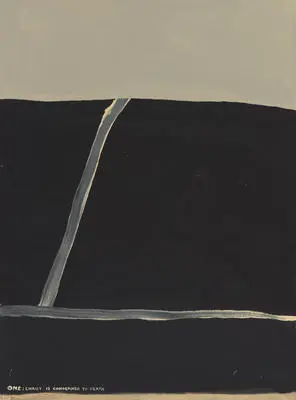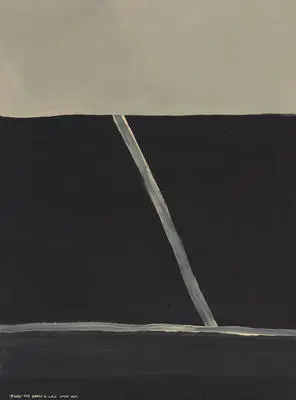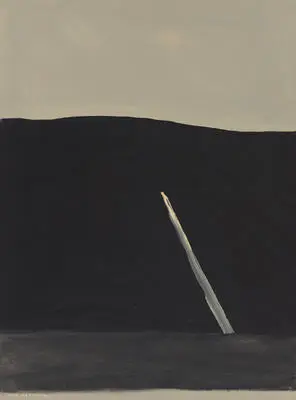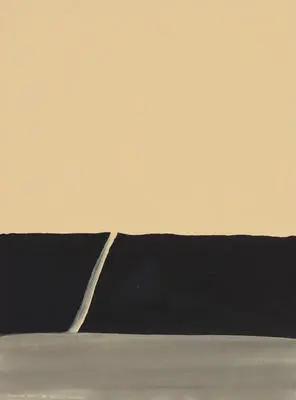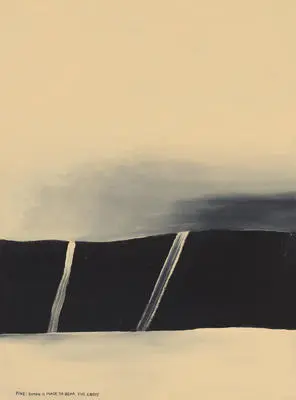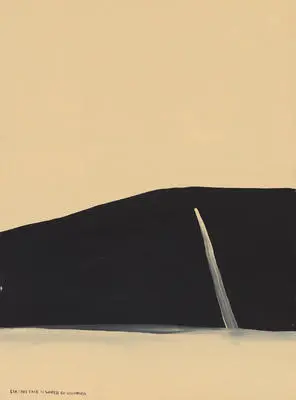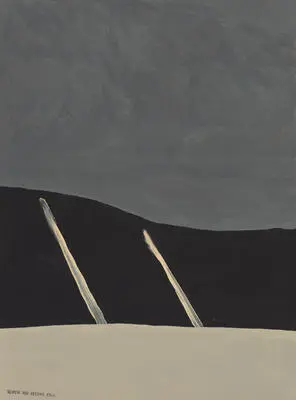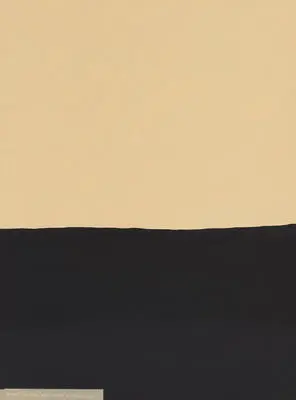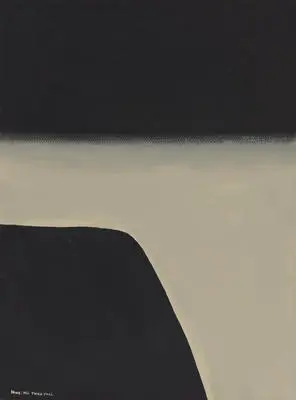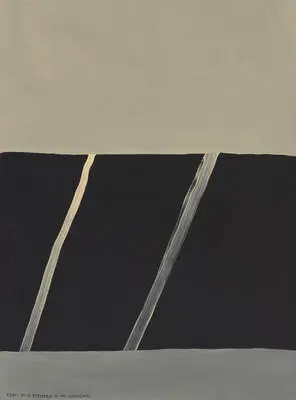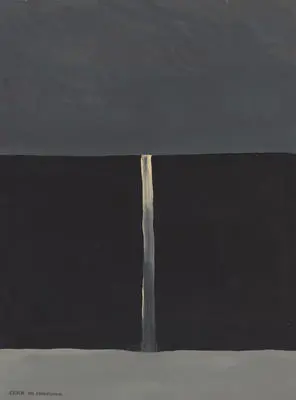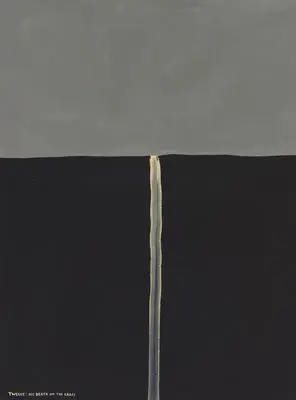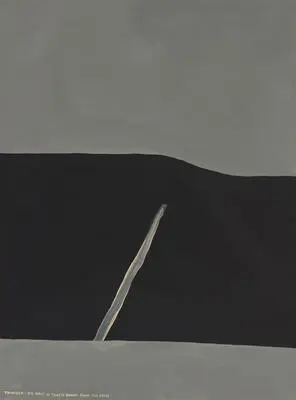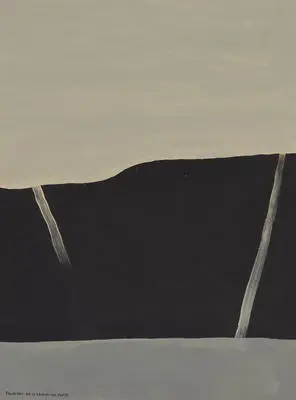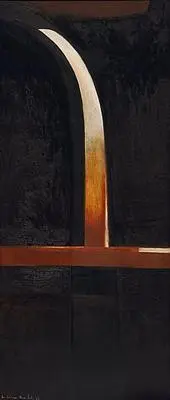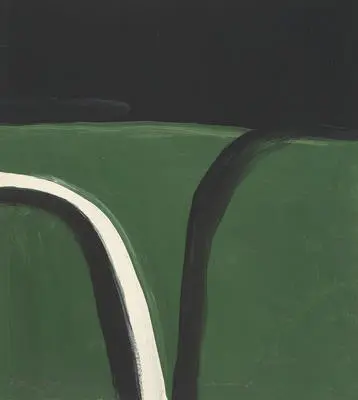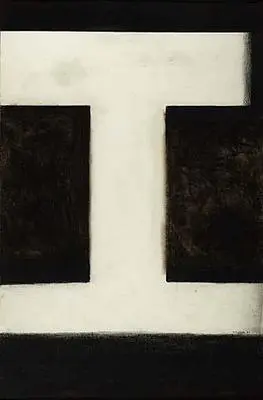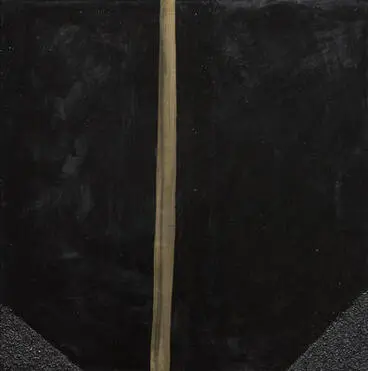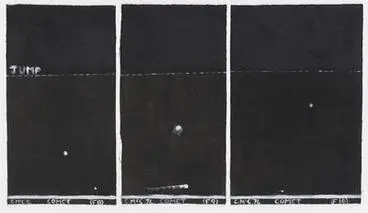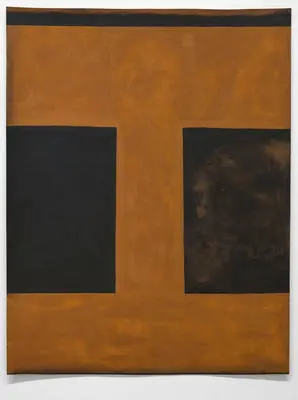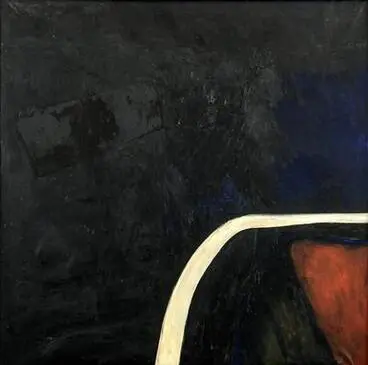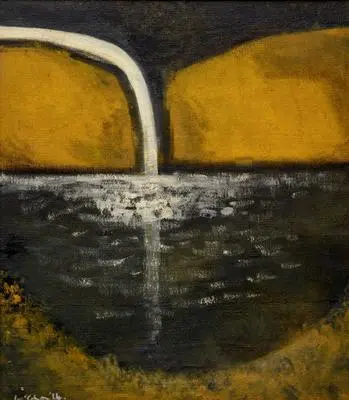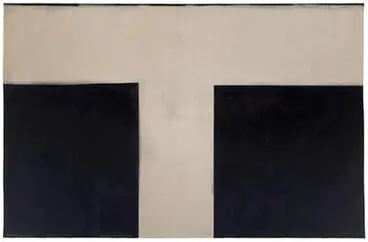McCahon, Light & Waterfalls
A DigitalNZ Story by Courtney Johnston
A fall of light dividing the darkness is a common symbol in McCahon's works from the 1960s onwards. The motif arose from McCahon's study of paintings by William Hodges, the official artist onboard Cook's 1772-75 voyage to the Pacific. A small group of Hodges' paintings were shown at Auckland City Art Gallery in 1959, when McCahon was working there, and he developed a deep connection with the earlier painter, later saying 'The waterfalls started flowing in 1964 and there were hundreds of them. They grew out of William Hodges' paintings on loan to the Auckland City Art Gallery from the Admiralty, London. Hodges and I eventually realised we were friends over the years and got talking about his painting. He was dead and I was about the same. We conversed through paint (about Naples yellow to start with) - and in 1964 I painted my first waterfall.' The work by Hodges that particularly interested McCahon was 'Waterfall in Dusky Bay, New Zealand', a large dramatic painting in which a Maori family is depicted against a romanticised landscape, centred on a foaming waterfall that tumbles from the darkness of the bush to break over a group of large boulders, throwing off a rainbow that encircles the figures. The waterfall extended as motif - light breaking through the darkness - as the years passed. McCahon's exquisite 1966 'Fourteen Stations of the Cross' exemplifies this - an abstract painting that, seen in this way, is also about Christian belief, human suffering, resurrection, and the land that surrounds us. As McCahon told his biographer Gordon Brown, 'waterfalls fell and raged and became as still silent falls of light for a long time. I look back with joy on taking a brush of white paint and curving through the darkness with a line of white.' Light separating good and evil, light illuminating doubt, light bringing hope, light asserting I AM ...
Necessary protection
Museum of New Zealand Te Papa Tongarewa
The Fourteen Stations of the Cross
Auckland Art Gallery Toi o Tāmaki
One: Christ is condemned to death
Auckland Art Gallery Toi o Tāmaki
Two: The Cross is laid upon Him
Auckland Art Gallery Toi o Tāmaki
Three: His first fall
Auckland Art Gallery Toi o Tāmaki
Four: He meets His Blessed Mother
Auckland Art Gallery Toi o Tāmaki
Five: Simon is made to bear the Cross
Auckland Art Gallery Toi o Tāmaki
Six: His face is wiped by Veronica
Auckland Art Gallery Toi o Tāmaki
Seven: His second fall
Auckland Art Gallery Toi o Tāmaki
Eight: He Meets the women of Jerusalem
Auckland Art Gallery Toi o Tāmaki
Nine: His third fall
Auckland Art Gallery Toi o Tāmaki
Ten: He is stripped of His Garments
Auckland Art Gallery Toi o Tāmaki
Eleven: His crucifixion
Auckland Art Gallery Toi o Tāmaki
Twelve: His death on the Cross
Auckland Art Gallery Toi o Tāmaki
Thirteen: His Body is taken down from the Cross
Auckland Art Gallery Toi o Tāmaki
Fourteen: He is laid in the Tomb
Auckland Art Gallery Toi o Tāmaki
Waterfall
Auckland Art Gallery Toi o Tāmaki
North Otago
Auckland Art Gallery Toi o Tāmaki
Necessary protection
Auckland Art Gallery Toi o Tāmaki
Waterfall
Auckland Art Gallery Toi o Tāmaki
Comet (F8, F9, F10)
Auckland Art Gallery Toi o Tāmaki
The days and nights in the wilderness: a constant flow of light falls on the land
Auckland Art Gallery Toi o Tāmaki
Large waterfall
Auckland Art Gallery Toi o Tāmaki
The first waterfall
Auckland Art Gallery Toi o Tāmaki
Necessary protection
Auckland Art Gallery Toi o Tāmaki

